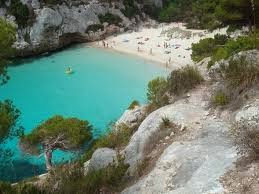Granitic morphological system
Granite is an igneous rock mainly made of quartz, mica, and feldspar. It rises to the surface because of the tectonic movements. This modeling is a consequence of how it is made and how it behaves. It leads to different landforms:
- Dome: The granite rises and it erodes dome shaped.
- Spheroidal weathering: these granitic structures are caused by the erosion of the dome. It provokes cracks that divide the block into smaller ones which appear organized stacked up
- Balanced rock: the rock breaks and starts rounding collapsing the structure, so the stones on the top, are in balance over the rest of the rock.
- Pinnacle: rock structure tower shaped.
- Flat stone: big, smooth, plain and long rock formed because of the breaking down of granites.
- Inselberg: some of them also have a granitic origin.
- Tafoni: Also formed in granitic-origin rocks thanks to different chemical processes.
- Tor: Water breaks the granitic rock down when it goes through the cracks that appear on it.
Karst
Geological
formation shaped by the dissolution of a layer or layers of soluble bedrock,
usually carbonate rock. The name comes from the Karts region in Slovenia. In
Spain, karst landscapes can be seen in Cuenca, Antequera…
External Karst
External Karst
- Limestone pavements
- Pit cave: vertical well that appears on carbonate rocks (water erosion).
- Upwelling: Water comes out the galleries through these areas.
- Sinkhole or doline: Circular depression because of the dissolution of the top part. It can also be formed by a cave collapsing due to materials weight.
- Polje: Bigger hollow that has a plain bottom.
- Uvala: Collection of multiple smaller individual sinkholes.
- Tormo: Vertical carbonate rock reliefs formed because of the dissolution of the rock bottom part.
- Torcal (tower karst): stone stacked up.
Internal Karst
Water seeps into the caves and floods the galleries as a consequence of the rise or fall of the water level. When it reaches the phreatic zone, the water accumulates and starts to run horizontally.
Water seeps into the caves and floods the galleries as a consequence of the rise or fall of the water level. When it reaches the phreatic zone, the water accumulates and starts to run horizontally.
- Stalactites and stalagmites: type of rock formations that hangs from the ceiling of caves (the first ones) or rises from the floor of a cave due to the accumulation of material deposited on the floor from ceiling drippings.
- Pit cave: vertical well which leads into deep caves and galleries.
- Column: union of a stalactite and a stalagmite.
- Travertine: Form of limestone originated when water evaporates and the bicarbonate precipitates.
































































